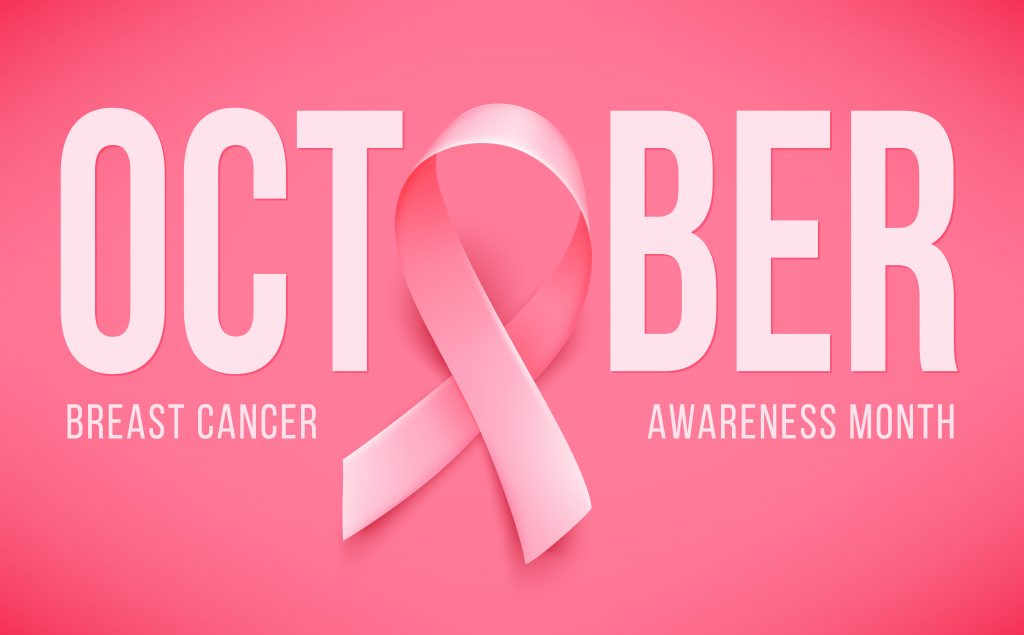Early Detection Saves Lives
Posted: September 24, 2019 by Kristin Patten
Category: Uncategorized
South Health District recognizes Breast Cancer Awareness Month

VALDOSTA – Each year, approximately 245,000 women are diagnosed with breast cancer and more than 40,000 women die from it. In recognition of Breast Cancer Awareness Month, Public Health Officials are committed to educating women about the importance of breast cancer screenings, early detection and healthy living.
As with many types of cancer, medical experts do not know exactly what causes breast cancer. Almost all breast cancer occurs in women. Breast cancer can develop in men, but it is very rare and accounts for less than 1 percent of all breast cancers, according to the Centers for Disease Control and Prevention (CDC).
Through South Health District’s Breast and Cervical Cancer Program, women who are Georgia residents, uninsured or underinsured and low-income, and who are 40 to 64 years of age can get clinical breast exams, pelvic examinations, pap smears (if needed), and mammogram referrals.
According to the CDC, the risk of developing breast cancer is influenced by many factors, such as:
- Getting older. The risk for breast cancer increases with age; most breast cancers are diagnosed after age 50.
- Genetic mutations. Inherited changes (mutations) to certain genes, such as BRCA1 and BRCA2. Women who have inherited these genetic changes are at higher risk of breast and ovarian cancer.
- Reproductive history. Early menstrual periods before age 12 and starting menopause after age 55 expose women to hormones longer, raising their risk of getting breast cancer.
- Having dense breasts. Dense breasts have more connective tissue than fatty tissue, which can sometimes make it hard to see tumors on a mammogram. Women with dense breasts are more likely to get breast cancer.
- Personal history of breast cancer or certain non-cancerous breast diseases. Women who have had breast cancer are more likely to get breast cancer a second time. Some non-cancerous breast diseases such as atypical hyperplasia or lobular carcinoma in situ are associated with a higher risk of getting breast cancer.
- Family history of breast cancer. A woman’s risk for breast cancer is higher if she has a mother, sister, or daughter (first-degree relative) or multiple family members on either her mother’s or father’s side of the family who have had breast cancer. Having a first-degree male relative with breast cancer also raises a woman’s risk.
- Previous treatment using radiation therapy. Women who had radiation therapy to the chest or breasts (e.g., treatment of Hodgkin’s lymphoma) before age 30 have a higher risk of getting breast cancer later in life.
- Women who took the drug diethylstilbestrol (DES), which was given to some pregnant women in the United States between 1940 and 1971 to prevent miscarriage, have a higher risk. Women whose mothers took DES while pregnant with them are also at risk.
The following are recommendations to help reduce your risk of breast cancer:
- Getting regular physical exercise.
- Maintaining a healthy weight.
- Limiting alcohol intake to no more than one drink a day.
- If you are taking, or have been told to take, hormone replacement therapy or oral contraceptives (birth control pills), ask your doctor about the risks and find out if it is right for you.
- Breastfeeding your children, if possible.
- If you have a family history of breast cancer or inherited changes in your BRCA1 and BRCA2 genes, talk to your doctor about other ways to lower your risk.
If you are a woman between 40 and 64 years of age and do not have health insurance or the resources to get a mammogram, you may be eligible to receive the health screenings you need at no cost through the Breast and Cervical Cancer Program. To learn more about services in your area, call your local health department or visit them online at www.southhealthdistrict.com.
Remember, the best protection is early detection!


